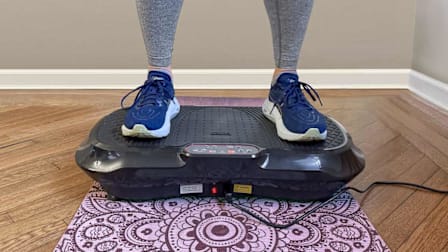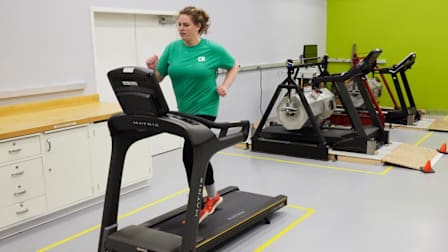Get Way More Fit in Just 10 Minutes a Day
It's hard to find the time to exercise. The good news: Even short bursts of activity can make a big difference.

We all know that moving around is good for us. But if the government’s exercise guidelines—at least 150 minutes of moderate aerobic activity and two strength training sessions a week—seem daunting, here’s a bright spot. While that amount is worth working toward, you don’t have to hit those goals to see significant benefits. Research shows that exercising about 11 minutes a day (75 minutes a week) is associated with improved health and a lower risk of cardiovascular disease and various cancers.
It's Fine to Start Slowly
If you’ve been sedentary, go easy at first. “It can be 10 minutes a couple times a day, or even 10 minutes a day for the first couple of weeks,” says Tracy E.K. Davis, PhD, an associate professor in the department of interdisciplinary studies at Rutgers University in New Jersey.
Ramp Up Your Cardio a Bit
To increase activity easily, go for walks. “Doing 500 to 1,000 more [steps] per day is going to make a difference,” Paluch says. Older adults don’t need to hit 10,000 steps for better health, she says. For people ages 60 and older, benefits such as lowering the risk of heart disease or premature death start to level off between 6,000 and 8,000 steps a day.
Up for more? A modest amount of vigorous exercise can be surprisingly good for you. A 2022 study found that about 15 weekly minutes of activity like jogging or hiking was linked to a 16 to 18 percent lower risk of overall mortality. Twenty minutes was linked to a 40 percent drop in the risk of cardiovascular disease death.
Put Some Focus on Strength
For building and maintaining strength, “once a week can be more than enough” if you put in sufficient effort, says James Steele, PhD, an associate professor of sport and exercise science at Solent University in the United Kingdom. Strength workouts may boost mental health and improve health in similar ways to aerobic exercise, according to Paluch. That makes it worth working strength exercises into your life, whether with a weekly 20-minute session or two, or several shorter ones. You’ll want to target your lower body, core, and arms.
Classes for Older Adults
You can certainly stay fit without taking formal classes, but they can help keep you motivated, something that may be particularly useful for older adults who don’t already have a fitness regimen. Interested? Look for instructors who are experienced in working with older adults, says David Marquez, PhD, a professor of kinesiology and nutrition at the University of Illinois Chicago.
For instance, Silver Sneakers offers a wide variety of classes including strength and yoga both online (live and on demand) and in person in gyms, local community centers, and—weather permitting—parks. These are even covered by some Medicare plans.
Many YMCAs have EnhanceFitness classes, which offer a mix of arthritis-appropriate cardiovascular, strength, balance, and flexibility training. People with arthritis may also want to check local community centers for Fit & Strong classes, which are designed for sedentary older adults with joint pain. Other good sources include local senior centers and the exercise videos from the National Institute on Aging.
Editor’s Note: This article also appeared in the November 2023 issue of Consumer Reports on Health.




















